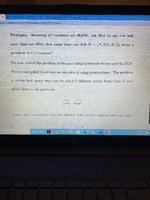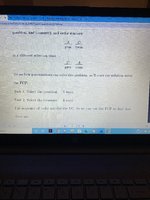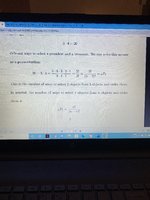It may also help to understand the thinking behind each piece of that line:
View attachment 25795
First, they have the calculation they just did, 5*4 = 20. That alone is all you need to answer the question. But then they are showing other ways to think of that calculation that can be generalized. We could just describe it as "start with 5, and multiply by successive numbers counting down for 2 numbers", but that's a little awkward.
Next, they multiply the numerator and denominator by 3*2*1, which doesn't change the value, but makes it look pretty! That is, it shows a pattern that can be useful; it's really just a different way to say the same thing, but leads in the direction of using factorials. It sort of says, start at 5, and multiply
all the way down to 1, but ... don't include the numbers starting at 3.
The next thing they show expresses this explicitly, as 5!/3!. Why do this? Just because we already have a notation for multiplying
all the way down to 1, and want to reuse it. Too many different notations makes things complicated.
Then they start to generalize: the 5 is the number of items to choose from; where did the 3 on the bottom come from? That's 2 less than the 5, and the 2 is the number of slots to put items in. So 5!/(5-2)! expresses the calculation directly in terms of the two numbers in the problem.
Finally, they just give a name to this thing we've calculated, "the number of permutations of 5 items taken 2 at a time", the symbol \(_5P_2\).
All the expressions on that line are different ways to say the same thing, and each is useful in different places. The notation at the end is useful because calculators often have a button for that, which can do complicated calculations you don't want to have to write out!
After all this, they define that last notation in general, using the form they'd ended up with:
View attachment 25797
This gives us a simple way to tell someone to do that calculation, which, ultimately, just means "start with n, and multiply by successive numbers counting down for r numbers" -- but not so wordy.



